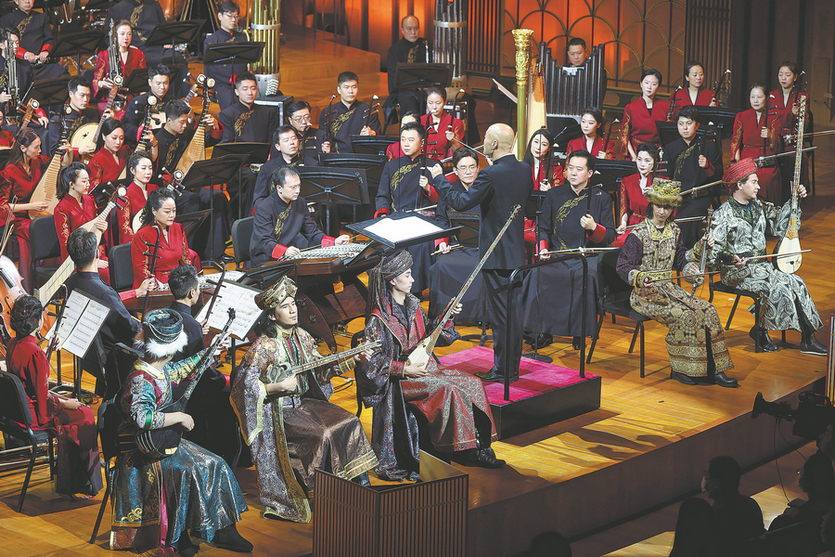

Legend has it that a man, named Ling Lun, who was in charge of the court's music, was assigned by the ruler to explore the rules of music and make harmonious sounds that could be played at grand ceremonies. He traveled to the mountains where he saw bamboo around him. He cut some of the reeds down and to various lengths and carved some holes in them and began blowing. After modifying his bamboo pipes he discovered the 12 fundamental pitches.
The concerts featured 12 music works that corresponded to the 12 fundamental pitches. The first work, titled Huangzhong — Ode to the Chinese Ensemble, was composed by Hao Weiya. It featured musicians of the China National Traditional Orchestra playing 10 ancient Chinese musical instruments, such as qing (chimes used as a percussion instrument in ancient Chinese music), sun (Chinese pottery flutes) and xiao (Chinese vertical end-blown flutes).
The second music work, titled Dalyu, composed by Gu Jianfen, was performed by a children's choir and the orchestra.
The other 10 music works were all named after one of the 12 fundamental pitches, such as Taicu, Jiazhong and Nanlyu.